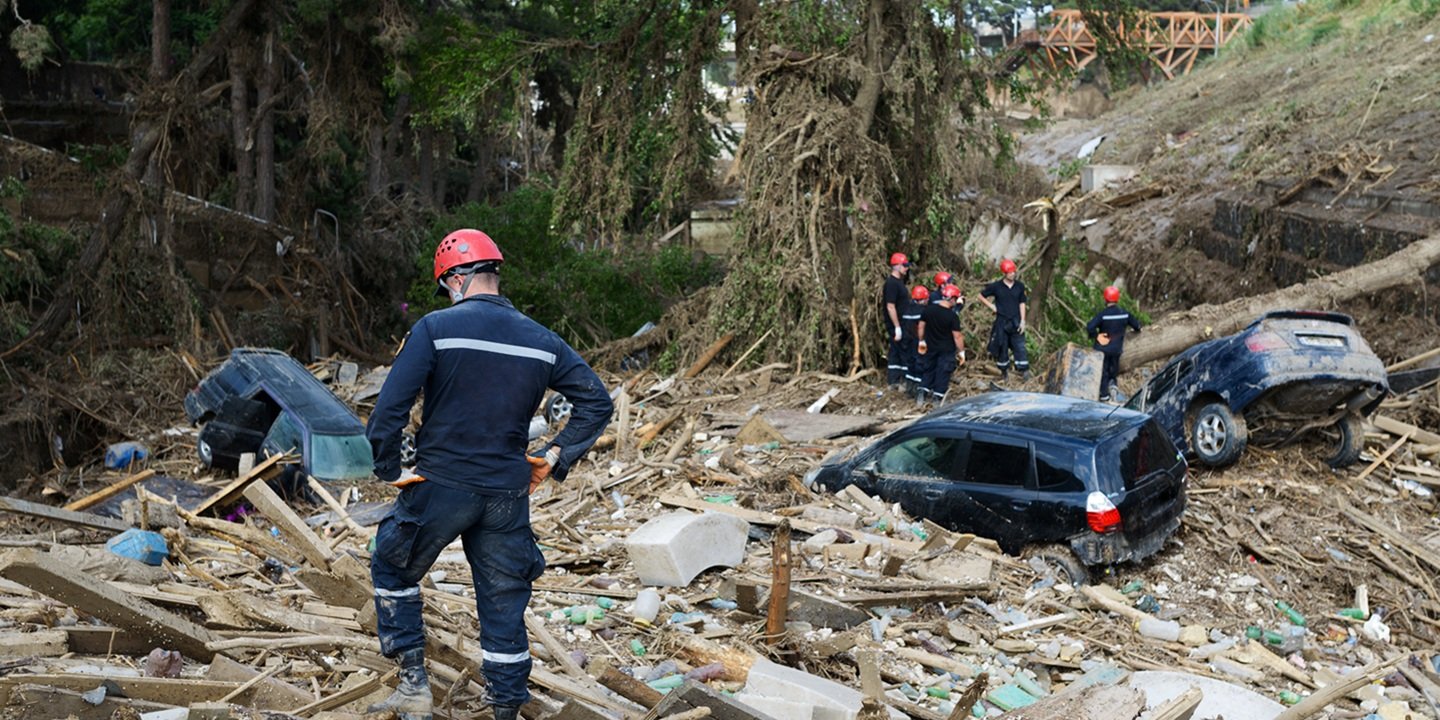Flood recovery: What to do when the waters recede
Climate and EnergyArticleAugust 15, 2025
Whether from hurricanes or heavy storms, rising rivers or other sources, flood waters inundate with a force that can be impossible to stop. And as climate change accelerates and warming temperatures drive greater rainfalls, evidence grows that the cost of flooding itself is on the rise. After the flood waters recede and the damage becomes more clear, companies whose sites were hit need to put their recovery plan into action — quickly, but safely. Below are tips on how to respond.
Access the site
Flooding may cause a number of hazards, including toxic spills, damages to buildings and undermined paved roads or other exterior surfaces. Live electrical lines, shorted wiring and interior electrical systems can energize standing water, creating an electrocution risk. So before entering the site, ensure qualified personnel evaluate all risks. Severely damaged areas of a building should be reviewed by a structural engineer. Electrocution is a risk from downed power lines, so treat them as live until a utility provider confirms they are de-energized. Do not reconnect electric or gas until your utility provider has cleared you to do so.
Document damage
Take photos to document the damage. This will support the filing of claims. Before entering the site, equip yourself with the necessary tools and protective gear, as well as drinking water, disinfecting supplies and a first aid kit. Consider toting a backup camera along with your fully charged cellphone. Consider taking a fire extinguisher.
Get the word out
Inform employees, clients, suppliers, local authorities, media, etc., about conditions at the site and expectations on when it may open again for access. Inform public sanitation professionals of any site damage.
Initiate clean-up
Grant site access to begin clean-up operations only after an all-clear from the proper authorities. Remove ruined, moisture-soaked objects from the affected buildings and away from exterior walls to facilitate the drying out. Dispose of damaged material, which is also most likely to be contaminated, according to local regulations. Restore air conditioning systems or rent or purchase blowers and dehumidifiers to assist in the drying out and to mitigate mold. Do not use extension cords in wet areas.
Have utilities checked
Power and other utilities should not be restored until after inspection by qualified personnel. This is essential to ensure employee safety upon resumption of operations and to prevent equipment damage. After getting safety assurances, have electricity and gas services restored.
Inform your insurance company
Call your insurance representative to begin the claims process. Provide photo documentation of damages as well as a diary of events (a logbook), including when the waters entered and how long until they receded. Ask for guidance on which damaged goods can be disposed of, and what should be set aside to be used to support a claim. Maintain contact with your insurer throughout the process.
Check protection systems
Verify that water supplies, fire pumps, automatic sprinklers, fire alarms and security systems are working. Report fire protection system outages. If any of these systems are compromised, make repairs and post security personnel on site. Clear roof drains, balcony drains, and ground-level catch basins and drains in preparation for further rain. If further floods are predicted in the near term, set up sandbags or other recommended barriers at low level doors and entrances.
Contact restoration contractors
Having a relationship with disaster recovery contractors should be part of your company’s flood Emergency Response Plan (ERP). After a flood, get in touch with contactors as soon as possible to line up any appointments needed for service. Establish repair priorities based on the level of danger the damage poses. Any contractors on-site must wear proper safety equipment, while respirators and chemical protective gloves or suits should be considered.
Conduct environmental controls
If water has been collected in retention pits on the property, test the water for potential contaminants before draining it or releasing it into the environment.
Protect your employees
Employees often support the business during the cleanup after a flood but ensure they are kept safe. Stay in regular contact, supply needed protective gear and factor in the possibility of disruptions to suppliers and distributors.
Find guidance on the other phases in a Flood Emergency Response at Zurich North America’s Flood Resource Hub.
The guidance in this article was provided by Zurich Resilience Solutions.
